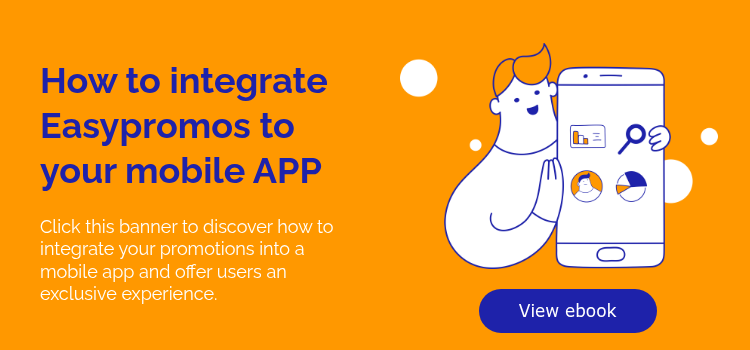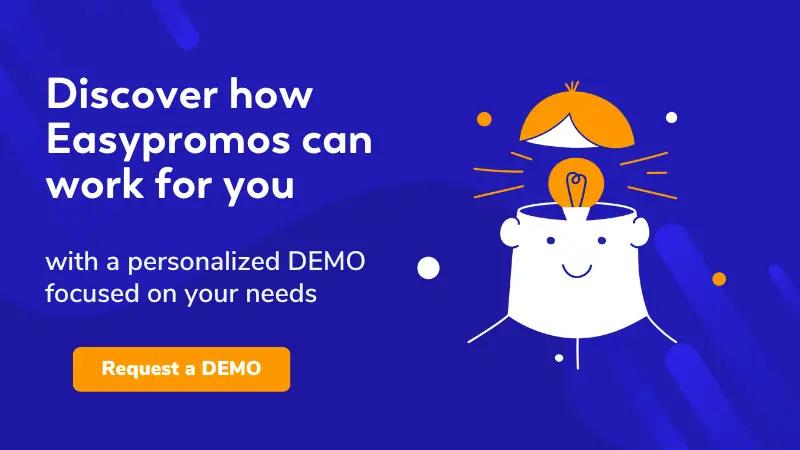There are a few different factors that normally influence our choice when it comes to user registration in online promotions:
- Do I want to permit users to participate in the promotion multiple times?
- Is lead generation one of my objectives or do I solely look to deliver entertainment?
- Is fraud control a key factor?
- Do I want the promotion to be available only for members of a private online community?
In this blog post, we take a look at three different possibilities that you can choose from whenever designing a new promotional campaign. Let’s take a look at all three options so you can decide which one is the most suitable user registration option for your campaign.
Option 1: No registration form
Some brands choose to launch promotions with no user registration. It is also known as anonymous participation.
Marketers are now placing their efforts in content marketing; interactive campaigns and promotions are gaining more recognition, as brands find them more effective than traditional marketing campaigns. Mini-games, contests, or even questionnaires are the go-to tools for many companies, no matter the size. They allow brands to generate high-quality engagement for online communities; interactive promotions not only advertise the organizing brand and its products or services. They attract potential customers, educate, and entertain social media followers. If these are the main objectives of your campaign and you’re not looking to collect new leads or raffle prizes then this option might be the most adequate for your campaign.
Promotions with anonymous participation have no participation barriers and allow users to partake as many times as they wish.
Remember! Use anonymous participation to reinforce brand awareness, entertain your online communities, and obtain information left by participants in questionnaires and quizzes.
What is anonymous participation recommended for?
Promotions with no registration are a popular part of entertainment marketing, which is when facets of the entertainment world are used to promote a brand or product, boost brand engagement and reinforce brand affinity. Branded games and quizzes are the best examples of entertainment marketing.
Disabling the option to register is also recommended for brands that launch Product Recommenders and look to direct traffic to their website. Some participants might abandon the promotion at the moment of sharing their contact information. In case when registering is not required participants are more likely to complete the quiz and head to the page to view the recommended products online.
Examples of promotions with anonymous participation
Here’s an example of a promotion where players didn’t have to identify themselves in order to participate. The user gains a direct access to the game, without having to leave their contact details. Upon completion of the game the user sees a final page with their score (if enabled), but there is no final ranking. The player can also go back to the main page and participate once again.
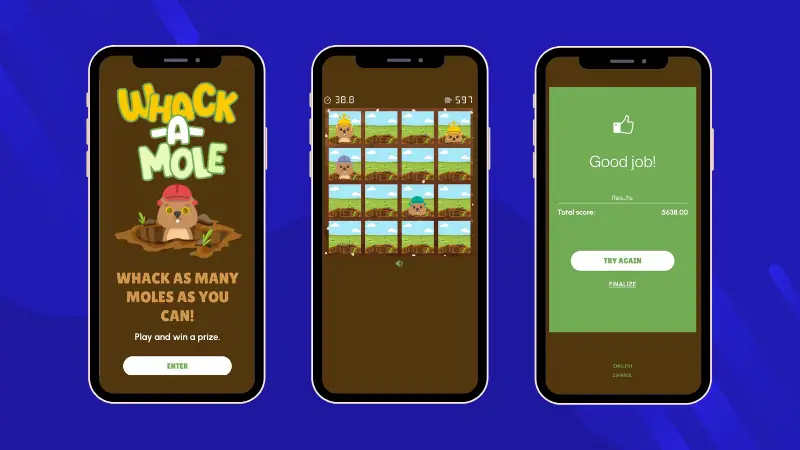
The next example from ByHours was launched to recommend participants hotels based on their likes and preferences. The brand didn’t ask for contact details at any point. Instead, they shared a direct link to attract visitors to their website.
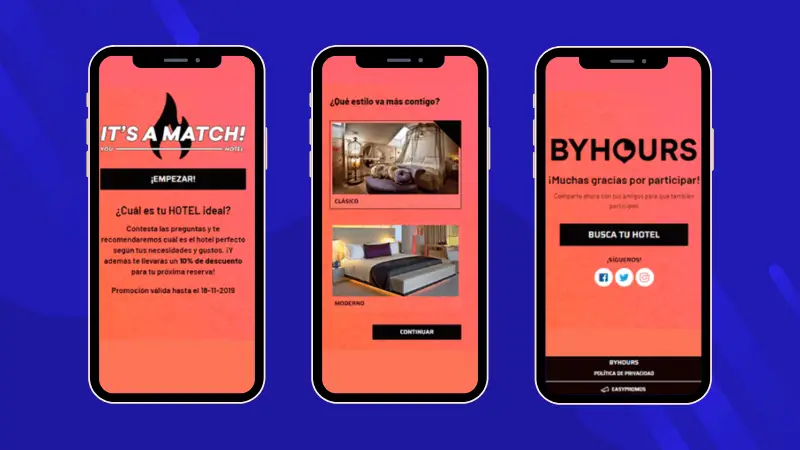
The Easypromos user registration form
The Easypromos user registration forms are fully customizable to fit your data collection objectives. Besides the typical information fields like name, surname, and email, you can include additional fields to collect specific user information that will help you better know and segment your audience. Additionally, these fields can have different formats such as drop down, check boxes, dates, etc. Learn more about how to customize your promotion or giveaway entry form in this article.
Option 2: Participate and register to opt-in for a prize or see results
A natural way to generate new leads with a playable promotion is to firstly offer the interactive experience (a game, quiz, or public vote) to then present the participants with a user registration form. This way user identification is the last step of the participation process.
A very important aspect of any lead generation campaign is an attractive reward. Put simply, users must have a good reason to share their contact information with brands. The better, and the most relevant, the prize is for users, the more willing they will be to provide you with the information you are after. This fact alone, makes the prize one of the most important elements for the success of your promotion.
Take a look at this promotions prize survey carry out by Easypromos to learn more about it.
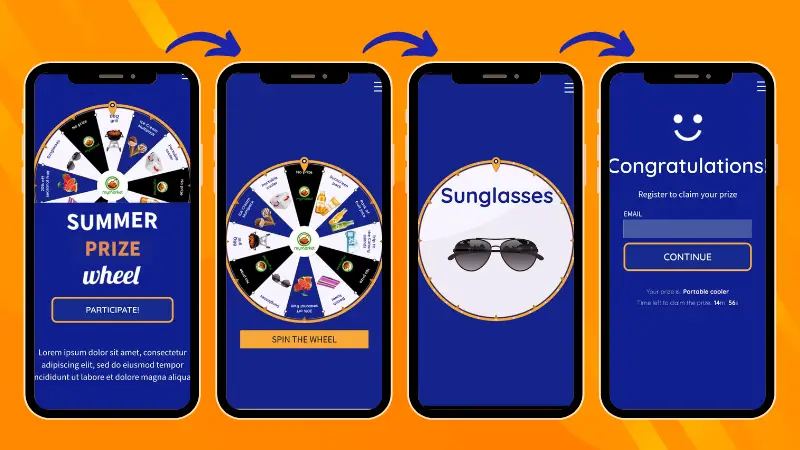
When is it recommended to launch campaigns with user identification as the last step of the participation process?
If obtaining user data is the main objective of your promotion then user identification as the last step of the participation process is the best way to accomplish your goal.
This registration option is fantastic for lead generation on social media. Users participate in a quick and easy way and in return, they get one chance to win a prize. The facilitated participation process and attractive incentives are what attracts participants, just like in mini-branded games.
Did you know that you can give participants extra chances to win for convincing their friends to enter your promotion? Find out more about the Refer a Friend contest.
Examples of promotions with user registration form after participating
Games and questionnaires come with the participation and registration processes on two separate pages. You can see how a body care brand used a Puzzle game to educate their audience about their products. After arranging the jigsaw correctly, the participants filled in the registration and obtained a 20% discount for online purchases.
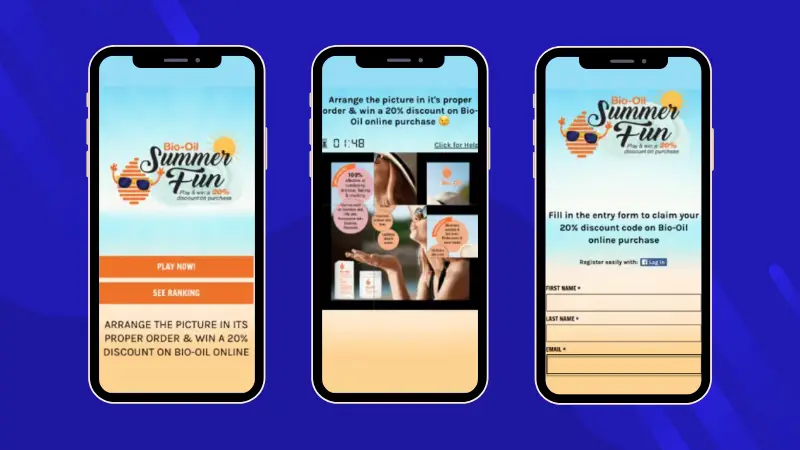
The same option is available for anyone launching a questionnaire, in this case, a Personality Quiz. Even though the participant can decide not to register, they have two reasons to complete the registration: the final result and a chance to win.
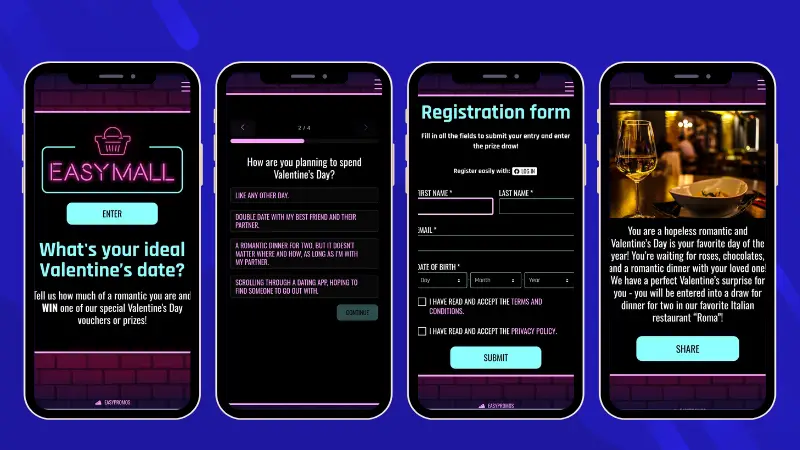
Dreamtime Resorts often organize easy to enter giveaways as part of their marketing strategy. The brand converts social media followers into high-quality leads by offering family weekend getaways. In the case of an Entry Form Giveaway, the participation and registration process takes place on the same page. In their most recent promotion, Dreamtime Resorts asked the participants to share their contact information and answer the following question: “What is the water park at Turtle Beach Resort called?”. To know the answer to this question, the participants had to first visit the organizer’s website. It was a fantastic tactic to drive traffic to the Dreamtime Resorts’ website.
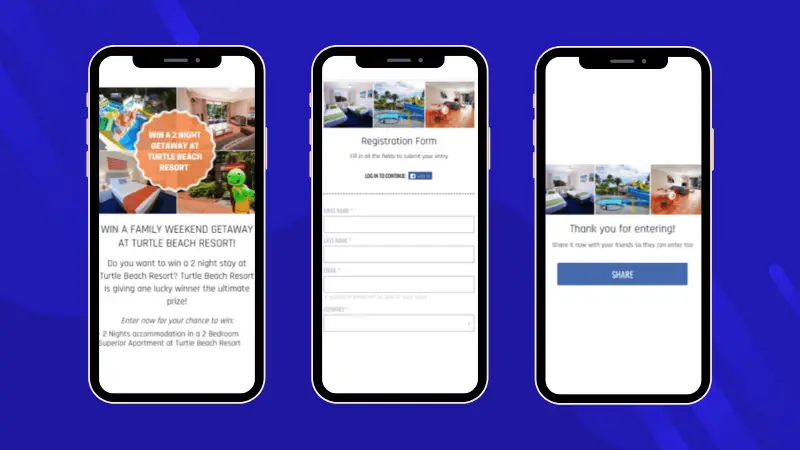
Single participation and registration work very well for brands looking to distribute discount codes or special offers meant just for the registered user. By allowing users to participate only once brands ensure that entrants don’t take advantage of the promotion by participating multiple times. The next example shows how a Hungarian aquapark launched a lead generation campaign. To attract more potential customers they distributed 20% discount coupons to all registered users on top of raffling free family tickets. Registered users obtained unique codes redeemable only once. That way the organizer controlled the number of codes given away and avoided possible frauds.
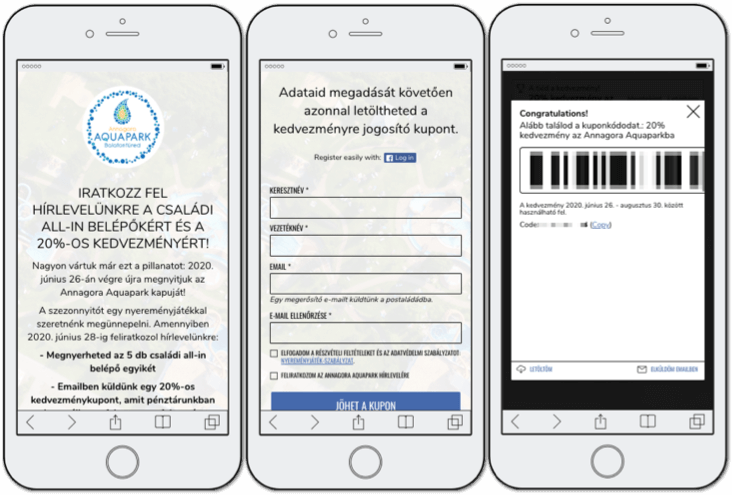
Option 3: User registration before participation
The last possibility is to register the participants before they get a chance to participate in the promotion.
The following are the benefits that come with this registration option:
- More qualified database: pre-participation registration works as a filter. Only users that verify their email addresses are able to access the promotion and opt-in for a price.
- Multi participation: if you’re looking to launch a campaign in which entrants participate multiple times over the course of a specified number of days, user identification must be the first step of the participation process.
- Increased engagement: by enabling multi participation you encourage users to log in to your promotion multiple times. Daily participation in a prize wheel is a great example.
- Campaigns integrated into your mobile application, customer area, or customer loyalty programs: promotions with pre-participation registration allow participants to register through third-party identification systems such as Facebook Login, Google Login, and external user identification systems.
When is it recommended to present the registration form before the participation process?
Pre-participation is recommended in the following cases:
- Long-term promotions where we want the participant to come back and participate more than once.
- Campaigns with multi-participation. Some of the most popular ideas:
- (1) Spin the prize wheel every day.
- (2) Participate in a branded Puzzle three times a day
- (3) Access the promotion daily to see if today is your lucky day in Instant Win promotions
- (4) Validate codes or purchase tickets to win
- If you want to enable the ranking page and create rivalry among the participants of promotions such as Puzzle, Memory, or Word Search.
- In customer loyalty campaigns integrated into mobile apps, intranets, and customer areas where you want to identify the participant using the credentials of your login system.
- Whenever your main goal is to identify and register the users rather than their participation.
- Promotions in which you want to reward only users with a verified email address.
How to identify participation users?
There are two different ways to identify the users:
Option 1: Users that are not registered in your private identification system: registration using social login or email address
Easypromos permits participants to identify themselves using their email address or social login (Facebook or Google login). Here you can see how Kneipp – a plant-based product manufacturer – implemented the login system into their branded Puzzle. Once registered, the users could partake in the challenge.
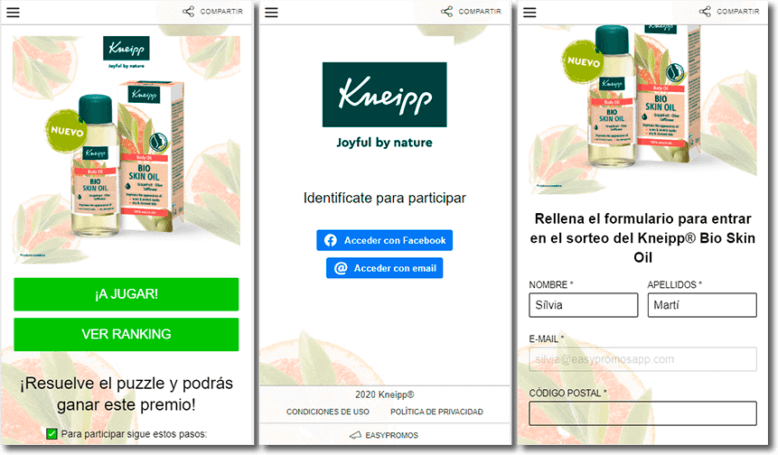
Another example would be this fitness wheel, which users access daily to discover their daily exercise routine. In this case, the organizing brand permits users to identify themselves through Facebook by confirming their email address. Next time the user enters the fitness wheel they won’t have to register again and if they access the promotion from the same device they will be directed to the participation screen. This provides a better and more direct user experience, which leads to increased engagement and recurring participation.
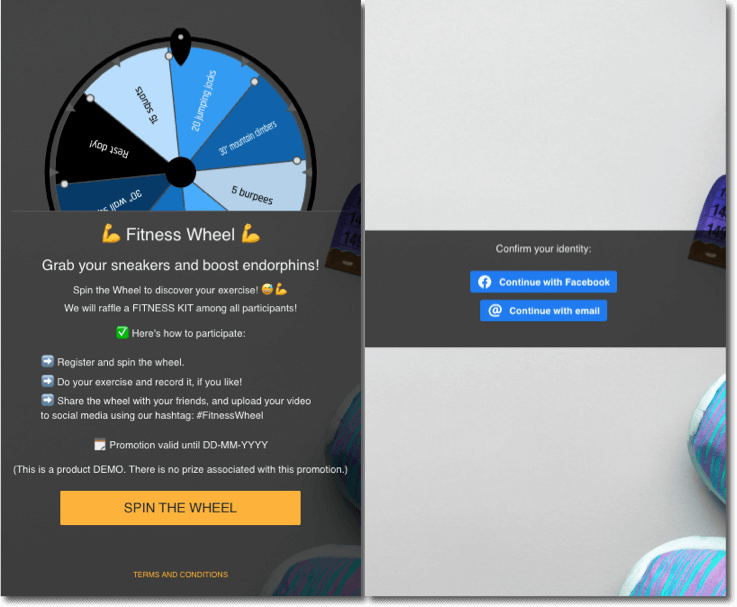
Option 2: Users that are registered in your identification system: registration with your credentials of your login system
Customer loyalty campaigns often come with promotions embedded in customer areas and mobile apps. Organizing brands want users to access these promotions directly using the platform credentials. This registration option is available thanks to the Easypromos Auto Login API.
Here you can see step by step how such promotions work. Users must be logged in to your mobile app, intranet, or customer area to be able to access the promotion.
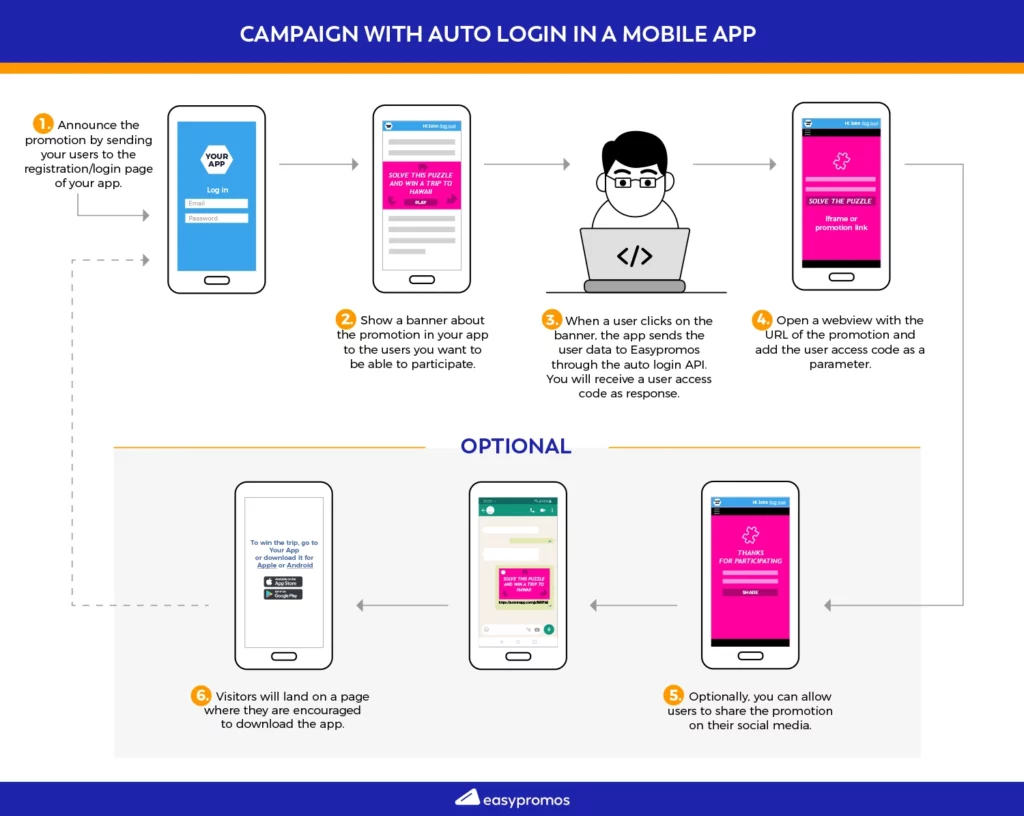
This way you can easily manage to identify the participant using the credentials of the app itself – the brand’s database. It allows you to obtain more user information, such as knowing if they partake in promotions. With the auto login API, you can also convert and retain more users.
These are the user identification and registration options that you can use with the Easypromos applications. As you can see, each possibility has its advantages that you should take into consideration when launching your next campaign. If you have questions or need further assistance contact our Support Team through our Online Chat!
